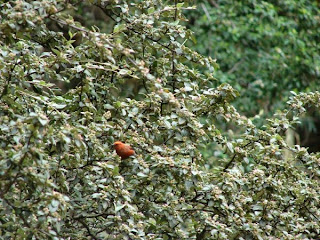Announcing 2010 Project Learning Tree Environmental Education workshops on Oahu and Maui!
Project Learning Tree (PLT) is an award-winning, multi-disciplinary Environmental Education program. These FREE professional development opportunities will provide educators with the chance to meet and share ideas with other teachers and participate in interactive lessons while learning how to use the PLT activity guide.
Maui educators participating in the PLT activity "Tree Factory"
Oahu PLT Workshop
Location: Hawaii Nature Center
Date: February 20th 2010
Time: 9-3:30pm
Details: Join us at the Hawaii Nature Center in Makiki to learn how the Project Learning Tree (PLT) curriculum can be integrated into 7th and 8th grade science classrooms. We will be offering PDE credits through the Department of Education to DOE teachers of 7th and 8th grade science that complete additional requirements. If this is of interest to you, please ask for more details prior to registering.
Educators of other grades and subjects are encouraged to attend, and may adapt materials for their own use. Lunch will be provided by Whole Foods Honolulu, and participants will receive the PLT activity guide with 96 interactive lessons as well as other educational resources.
For more information, visit www.hawaii.gov/dlnr/dofaw/PLT/2010
Maui PLT Workshop
Location: Hawaii Nature Center in Iao Valley
Date: March 20th 2010
Time: 9-3:30pm
Details: Meet at the beautiful Hawaii Nature Center in Iao Valley and learn how to use the Project Learning Tree (PLT) Activity Guide with your students. This interactive workshop will demonstrate several hands-on activities from PLT as well as Ohia Project and Hoike o Haleakala - two valuable Hawaii-specific environmental education resources. Lunch and snacks will be provided, and participants will receive free educational resources in addition to the PLT Activity Guide which contains 96 interactive lesson plans.
The Project Learning Tree (PLT) Pre K-8 Guide
Kauai and Hawaii Island PLT WorkshopsDetails to be determined. If you are interested in attending a workshop on Kauai or Hawaii Island in 2010, please ask for more info!
For more information about the workshops and to register, visit www.hawaii.gov/dlnr/dofaw/PLT/2010.
For more about Project Learning Tree, visit www.plt.org
PLT workshops in Hawaii are sponsored by the Department of Land and Natural Resources - Division of Forestry and Wildlife, in cooperation with Hawaii Nature Center, the US Forest Service, the American Forest Foundation and other partners.


















